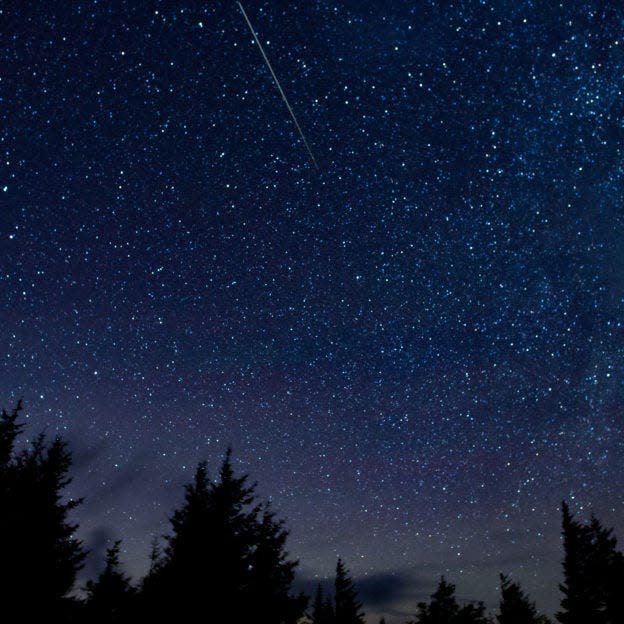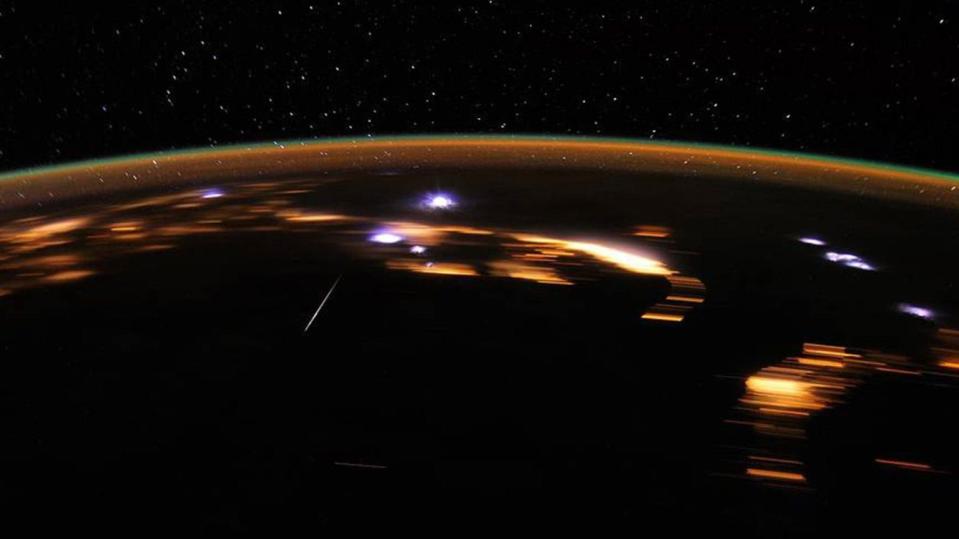Eta Aquariid meteor shower will be visible through May 27. When it peaks, how to watch
Good news stargazers: There are a bunch of celestial events coming up this spring and summer - as a matter of fact, there's one that's starting this week.
With a recent five-planet alignment and a Lyrid meteor shower, it's just about time for what's called the Eta Aquariid meteor shower. While the meteor shower is known for the display it puts on in the Southern hemisphere, it's still capable of dazzling above the equator with a show of about 10 to 30 meteors per hour.
What's more, this particular meteor shower has a famous "parent."
When is the date of the Eta Aquariid meteor shower 2024?

The shower began on April 15 and will last until May 27. But there's a specific peak time that's imminent.
The American Meteor Society states that 8:43 p.m. on May 5 is the shower’s predicted peak time. It added the shower will last several days.
"So you can expect elevated numbers of meteors a few days before and after the peak time," according to The American Meteor Society.
When can you see the Eta Aquariid meteor shower?
The Eta Aquariids appear in May and October of each year, according to Earthsky.org.
What is the best time to see the Eta Aquarids meteor shower in May 2024?
The best mornings to watch are May 5 and 6 in the hours before dawn, according to Earthsky.org.
To see the Eta Aquariids, Earthsky.org states that a "new moon will fall a few days after the peak of the 2024 Eta Aquariid shower...so, mornings around the peak will be dark and moonless," which is helpful for seeing celestial events.

What's the best way to observe the meteor shower?
In a recent interview with USA Today Network, Tim Brothers, Massachusetts Institute of Technology technical Instructor and observatory manager, said seeing meteor showers is possible with the naked eye, but with any case of stargazing, it's much better if you're using a good telescope or a pair of binoculars.
Where are Eta Aquariids best seen?
These meteor showers are usually seen best in the southern hemisphere, but "from the equator northward," they still produce 10-30 meteors per hour just before dawn, according to Earthsky.org.
If you're looking for the meteor shower, Eta Aquariids's radiant point is in the constellation Aquarius, near the star Eta Aquarii.
Want to admire the cosmos? Here's a beginner's guide to stargazing in Rhode Island
"The constellation of Aquarius – home to the radiant of the Eta Aquarids – is higher up in the sky in the Southern Hemisphere than it is in the Northern Hemisphere. In the Northern Hemisphere, Eta Aquarid meteors can more often be seen as 'Earthgrazers,'" NASA said. "Earthgrazers are long meteors that appear to skim the surface of the Earth at the horizon."
To watch the shower, NASA recommends laying on your back with your feet facing east.
What are meteors, specifically, Eta Aquariids? Where do they originate?
Meteors are essentially pieces of space rock, which are chunks of big comets, according to Space.com.
Meteor showers are "basically debris from the tails of comets," Richard Binzel, an MIT planetary sciences professor, said in a past interview.
The parent comet for the Eta Aquariid meteor shower is the well known, Halley’s Comet, which was last viewable from Earth in 1986.
Halley’s Comet will be back in view of Earth in 2061.
This article originally appeared on wickedlocal.com: Eta Aquarids meteor shower 2024: Where to watch, when it peaks, dates: Where to watch, when it peaks, dates

